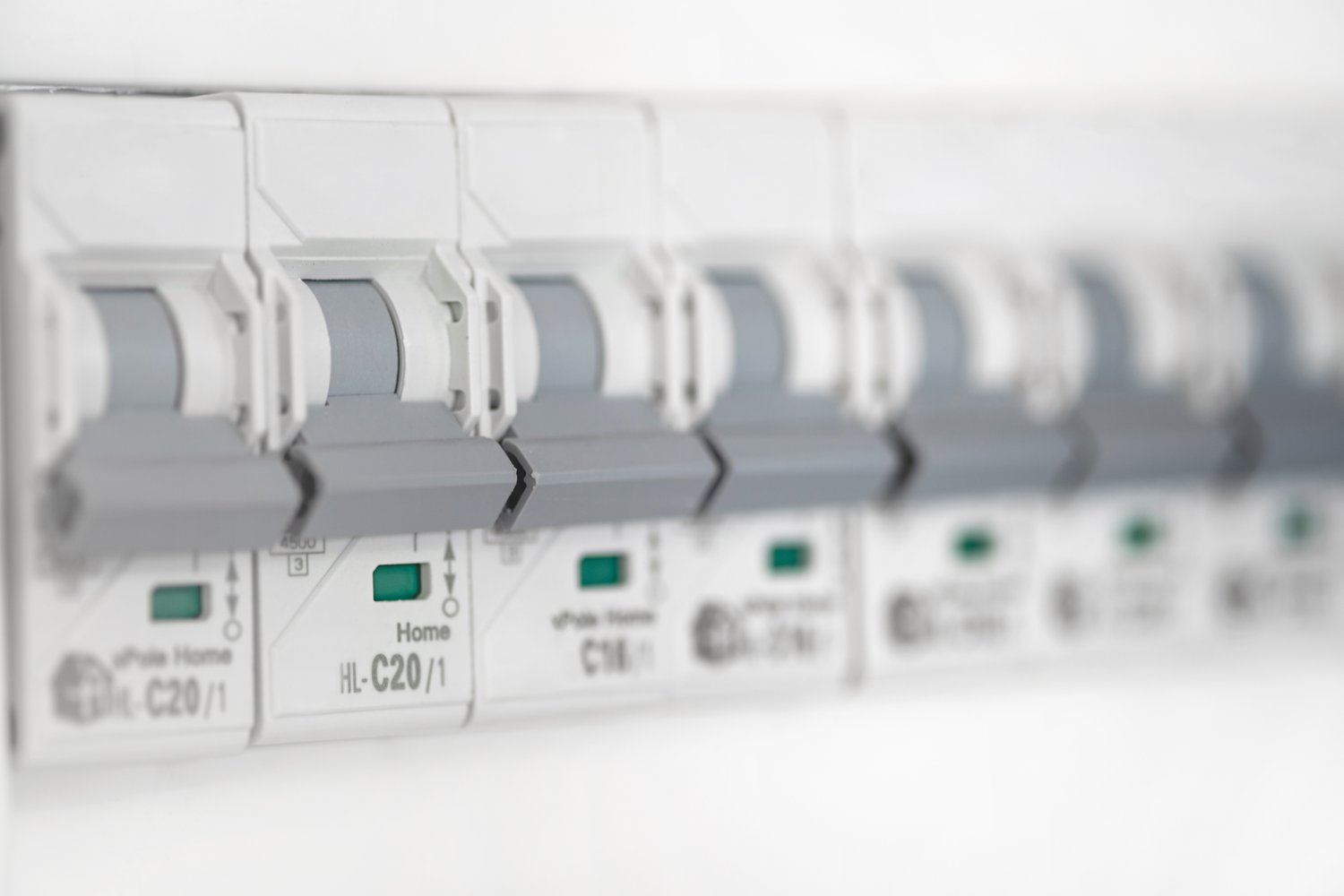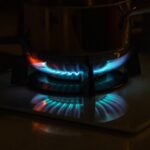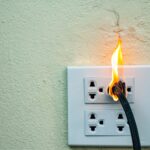Power surges are more common than you might think, and without the right protection, even a small spike can put your home’s entire electrical system at risk. Whole house surge protectors are your first line of defense, but understanding the meanings behind their status lights is crucial for maintaining that shield effectively.
- Discover how status light indicators can reveal the health and effectiveness of your surge protector.
- Learn practical steps for troubleshooting when status lights show unexpected colors or patterns.
- Explore maintenance tips that can prolong the life and improve the reliability of your surge protector.
- Recognize when it’s time to call in a professional to prevent potential electrical hazards.
By grasping the nuances of your whole house surge protector’s status lights, you can ensure a safer home environment. Delve deeper into this vital topic and share your insights or tackle queries with our expert community ready to assist you.
Understanding Whole House Surge Protector Problems: Status Light Solutions
Whole house surge protectors are critical to ensuring the safety of your home’s electrical systems. However, understanding the status lights on these protective devices can be crucial to identifying and addressing issues effectively. Common problems associated with surge protectors often stem from the various colors and blinking patterns exhibited by their status lights.
These indicators are not just there for aesthetic purposes; they serve as vital communication tools that provide insight into the operational state of the surge protector. By gaining an understanding of what typical problems are and how to identify them, you can ensure that your surge protector is functioning optimally.
Frequent issues that arise involve status lights turning off, changing colors, or blinking unexpectedly. Each of these signals can point to different underlying problems such as power surges, degraded protection, or even a malfunction in the unit, which can compromise your home’s electrical safety if not addressed promptly.
Interpreting Status Light Indicators: What They Mean
The key to maintaining your surge protector is knowing how to interpret its status light indicators. Different manufacturers may use varied color codes, but generally, the lights convey important information about the device’s condition.
A steady green light usually means the surge protector is operating correctly, providing the expected level of protection. If you see a red light or a blinking pattern, it could indicate an internal fault or that the unit has experienced a major surge.
Yellow lights often serve as warnings, indicating that some components might need attention soon, or the surge protector’s effectiveness is diminished. It’s crucial to refer to the manufacturer’s manual for precise interpretations.
Understanding these signals enables homeowners to take necessary actions, whether it involves minor adjustments, detailed troubleshooting, or considering a professional’s assistance to maintain electrical safety and preempt potential electrical hazards related to faulty surge protectors.
Troubleshooting Whole House Surge Protector Problems: Status Light Solutions
When it comes to whole house surge protectors, the status light serves as a critical indicator of the device’s health and functionality. However, when unexpected colors or patterns appear, understanding how to troubleshoot these issues is essential for maintaining your home’s electrical safety.
Firstly, identify the color or pattern displayed by the status light. A green light typically indicates that your surge protector is functioning properly, while a red or no light may signal a problem. If you see an unexpected color, refer to the manufacturer’s manual as different brands might use varied light codes.
Next, reset your surge protector. Unplugging the device and then reconnecting it can sometimes resolve minor glitches. Make sure to turn off power to the surge protector before attempting this step.
Inspect for visible signs of wear or damage on the surge protector, such as scorch marks or broken components. Physical damage often points to a need for more substantial repairs or replacement.
If the problem persists, check your home’s grounding system. A compromised ground connection can affect the performance of the surge protector and lead to unusual status light displays.
By addressing these potential issues, you can help ensure that your whole house surge protector continues to effectively shield your home’s electrical systems from unexpected power surges, guaranteeing safety and peace of mind.
Maintaining Surge Protectors: Ensuring Longevity and Reliability
Proper maintenance of your whole house surge protector is vital to ensure its longevity and reliability. Neglecting regular upkeep can shorten the life of the unit and compromise your home’s electrical safety.
Begin by periodically testing the device to ensure it’s working at full capacity. Follow manufacturer guidelines on how often you should test and what methods are recommended for your specific model.
Regularly inspect the surge protector for visible signs of wear or damage, such as frayed wires or discoloration. Such issues should be addressed promptly to prevent potential safety hazards.
Consider scheduling routine professional inspections. An expert can identify and resolve issues that may not be visible to the untrained eye, ensuring your surge protector maintains optimal functionality.
Finally, invest in a high-quality surge protector when it’s time to replace your old unit. Choose one with a reputable brand to ensure long-lasting performance and effective protection for your home.
By taking these proactive measures, you can extend the lifespan of your whole house surge protector, ensuring it continues to protect your home’s electrical systems efficiently.
When to Seek Professional Help for Whole House Surge Protector Problems
While whole house surge protectors are essential for protecting your home against electrical surges, there are times when expert assistance becomes crucial to fix status light issues and maintain electrical safety effectively. Understanding when to call in a professional can help you avoid potential hazards and ensure that your surge protector functions optimally.
Firstly, if your surge protector’s status lights are flashing in an unfamiliar pattern that is not covered in the user manual, it might indicate an internal fault or a deeper electrical issue. In such cases, professional intervention is necessary to diagnose the problem correctly and prevent future complications.
Additionally, consistent failure of the status lights to turn on, despite the surge protector being connected to a powered circuit, suggests a possible internal defect. A qualified electrician or technician can perform specialized tests to identify and rectify any underlying malfunctions.
If you’ve recently experienced a significant power surge—such as one caused by a lightning strike or a grid malfunction—and your surge protector displays unusual status light behavior, it is prudent to consult an expert. They can assess whether your device still provides adequate protection or if replacement is required.
Moreover, when you encounter persistent issues with power distribution, such as frequent tripping or unexplained power interruptions alongside status light problems, it’s advisable to seek professional help. These symptoms could indicate more intricate electrical problems within your home’s circuitry that only a trained professional can safely resolve.
Ultimately, ensuring your home’s electrical system’s safety and performance is paramount. By seeking professional guidance when you experience complex surge protector problems, you safeguard your property and maintain peace of mind. Share your experiences or any concerns with our community of experts to further support your journey in achieving optimal electrical safety.
Common Questions About Whole House Surge Protector Status Lights
What does a green status light mean on my surge protector?
A green light usually indicates that the surge protector is functioning correctly.
Why is my surge protector’s status light red?
A red light often signals a malfunction, depletion of protection capacity, or a wiring issue.
What should I do if the status light is off?
Check the power supply and replace the surge protector if it remains unlit.
Can the status light indicate when to replace the surge protector?
Yes, frequent changes in color or a red light typically suggest a replacement is needed.
Is it normal for the status light to blink?
Blinking lights may indicate an internal fault or a reset is necessary. Check the manual.





